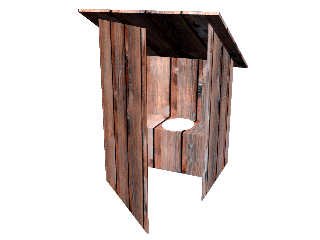The Monty Hall Problem
 This problem goes back a number of years and is used to
demonstrate how angry people can get when they don’t agree with an answer. Each time
this problem appears in the press it generates thousands of letters from people who
disagree with the solution. So the message here is don’t try this problem at home.
This problem goes back a number of years and is used to
demonstrate how angry people can get when they don’t agree with an answer. Each time
this problem appears in the press it generates thousands of letters from people who
disagree with the solution. So the message here is don’t try this problem at home.The problem also demonstrates the need to draw diagrams to be certain that your testing is not negatively influenced by preconceived ideas. Here’s the problem:
There are three doors. One of the doors has a very valuable prize behind it. If you can guess which door conceals the prize, it is yours. Whichever door you choose we’ll call it door number 1. The game show host, who knows exactly where the prize is located now opens one of the remaining doors which he knows has nothing behind it. Note: he is not opening a door at random, but is deliberately opening a door that has no prize behind it. The door just opened we’ll call door 2.



Now you are facing the 2 remaining doors. The one you originally chose and the remaining closed door. You are now asked whether you want to keep door 1, the choice you originally made or switch to door 3, the other closed door.
Do you maximize your chances of winning by switching doors, staying with your first choice, or does it not make any difference?
Answer: Switching to door 3 increases the probability of winning the prize from 1/3 to 2/3. If you think that the problem really involves 2 doors and 1 prize then the odds must logically be 50-50. But opening a door with full knowledge of what is behind it does not add any information to the problem and the probabilities do not change.
When all three doors were closed, there was a one out of three (1/3) probability of the prize being behind the door you chose. There was a two out of three (2/3) probability that the prize was behind one of the other two doors.
Now door 2 is opened, and the probabilities do not change. Since you obviously won't choose the open door, the odds are in your favor to choose door 3.
Another way to view the problem is to imagine another person entering the room and seeing two closed doors and one open door. If this person is asked about the odds of finding the prize the chances are 50-50. But if the person is allowed to ask you one question, they will ask which door you chose first. That one clearly had a 1/3 probability of being correct and they will select the other door.
A decision table may also be helpful because it identifies all of the possible conditions:
| Original Selection | 1 | 1 | 1 | 2 | 2 | 2 | 3 | 3 | 3 |
| Prize Location | 1 | 2 | 3 | 1 | 2 | 3 | 1 | 2 | 3 |
| Keep Original Door Choice | W | L | L | L | W | L | L | L | W |
| Switch Door Choice | L | W | W | W | L | W | W | W | L |
W = Win, L = Lose
| Note that switching your selection results in winning twice as often as staying with the original selection. |
